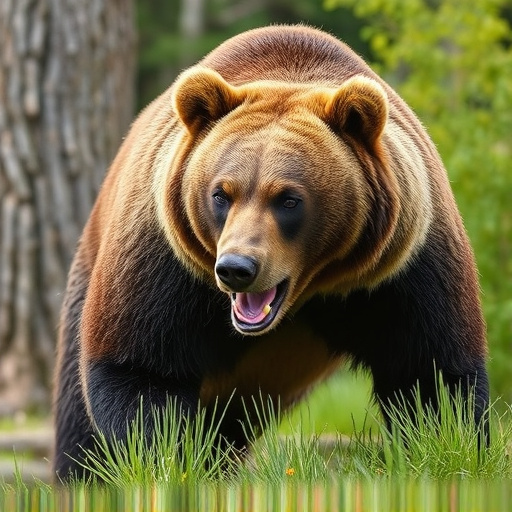Bear spray, with much higher capsaicin concentrations than conventional pepper spray, is a crucial tool for wilderness safety against charging grizzlies. Unlike firearms, it's non-lethal and provides valuable time to escape. Effective within 30 feet, bear spray temporarily disorients bears through intense eye and face stings, making it essential for adventurers in grizzly-inhabited areas. Choosing the right clip, suitable for day hikes or extensive expeditions, enhances its accessibility during emergencies.
In Alaska’s vast wilderness, encounters with charging grizzlies are a stark reality. Understanding how to utilize bear spray effectively can mean the difference between safety and danger. This article delves into the essential tool of bear spray, its power against aggressive grizzlies, and why it surpasses other self-defense options in remote settings. We explore the crucial aspect of choosing the right bear spray clip for safe and effective deployment, shedding light on a vital skill for outdoor enthusiasts navigating Alaska’s landscape.
- Understanding Bear Spray: An Essential Tool for Wilderness Safety
- The Power of a Charging Grizzly: When and Why Bear Spray is Crucial
- Comparing Bear Spray to Other Self-Defense Options Against Grizzlies
- Choosing the Right Bear Spray Clip: Ensuring Effective and Safe Use
Understanding Bear Spray: An Essential Tool for Wilderness Safety
Bear spray has emerged as an indispensable tool for ensuring wilderness safety, especially when encountering grizzly bears. Unlike conventional pepper spray designed for human self-defense, bear spray is formulated to deter aggressive bears from approaching by temporarily blinding and disorienting them. When facing a charging grizzly, the effectiveness of bear spray lies in its ability to create a powerful barrier between you and the bear, providing crucial time for escape or retreat.
Understanding the differences between bear spray and regular pepper spray is vital. Bear spray uses capsaicin, the same ingredient found in hot peppers, but in much higher concentrations. This creates an intense sting and irritation when sprayed directly onto a bear’s eyes and face. In contrast, standard pepper spray might not be as effective against large bears due to their thick fur, which can reduce the absorption of the irritant. Thus, for individuals adventuring in bear country, especially regions known for grizzly populations, carrying bear spray is no longer just recommended; it’s an essential safety measure.
The Power of a Charging Grizzly: When and Why Bear Spray is Crucial
A charging grizzly bear is a formidable force, capable of running at speeds up to 30 mph and achieving incredible jumps. When faced with such an attack, the instinct to run may come naturally, but it’s not always the best strategy. Bear spray, when used correctly, offers a crucial defense against these powerful animals.
Unlike other types of pepper spray, bear spray is designed specifically for use in close quarters with large predators like grizzlies. Its active ingredient, capsaicin, creates a temporary blindness and irritation, giving users precious seconds to escape or deter an attack. In the face of a charging grizzly, bear spray can be the difference between safety and a potentially deadly encounter, making it an essential tool for anyone venturing into bear country.
Comparing Bear Spray to Other Self-Defense Options Against Grizzlies
When considering self-defense options against charging grizzlies, bear spray stands out as a unique and effective choice. Unlike firearms or other conventional weapons, bear spray is designed specifically for use in close encounters with bears. Its range—typically around 30 feet—and ease of application make it a handy tool for hikers, campers, and those living in bear country.
Comparatively, while firearms offer broader protection against various threats, they require training and come with their own set of complexities and risks. Bear spray, on the other hand, is non-lethal when used correctly, making it less likely to escalate a situation. This aspect is crucial when considering that charging grizzlies are usually defensive or curious rather than predatory, and using lethal force can inadvertently worsen the situation.
Choosing the Right Bear Spray Clip: Ensuring Effective and Safe Use
When considering a bear spray clip for personal safety in Alaska, especially when facing potential grizzly encounters, choosing the right one is paramount. The market offers various options, each designed for specific scenarios and needs. For instance, lighter, more compact clips are ideal for day hikes and camping trips, while sturdier models with additional features might suit those engaged in longer expeditions or wildlife research.
A key aspect to consider is compatibility with your bear spray can. Not all sprays fit every clip design. Ensure the clip accommodates your canister’s size and weight, allowing for a secure attachment. Moreover, look for clips featuring quick-release mechanisms, which facilitate swift deployment during an emergency, such as when faced with a charging grizzly bear. This distinction is crucial in the wild where seconds can mean the difference between safety and danger.
In light of the above discussions on bear spray safety, it’s clear that understanding when and how to use bear spray against a charging grizzly is crucial for wilderness safety. Compared to other self-defense options, bear spray offers a non-lethal yet effective solution, especially in close quarters. When choosing your bear spray clip, ensure it’s compatible with your spray and designed for safe, easy deployment. By following these guidelines, you’ll be better prepared to navigate the wilds of Alaska or any area inhabited by charging grizzlies, enhancing your chances of a safe and enjoyable outdoor experience.
